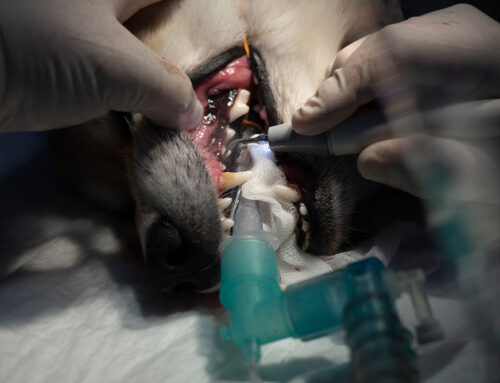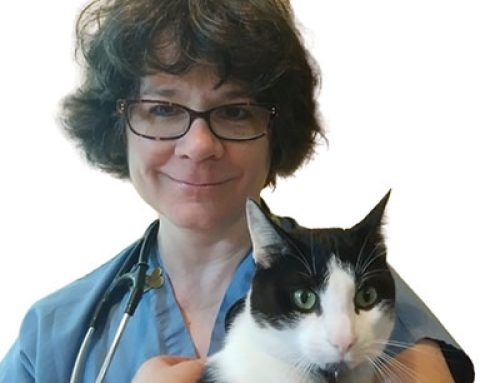Human medicine has undergone a progressive departmentalization and specialization process, which provides for greater advancements and patient care options. The primary care physician still plays an integral role, especially in systems requiring referrals and coordination of care. More and more clients are demanding this high-level care for their pets, understanding that specialists can provide better outcomes, but still wanting a close, personal relationship with their primary veterinarian.
The VESPECON team believes that collaborative care benefits patients, clients, and the veterinary care team. Our services not only help facilitate those relationships but also build care teams that improve pet lives.
What is collaborative team-based care?
Collaborative team-based care focuses on how the care triad—clients, primary veterinarians, and specialists—can improve pet health beyond what is possible with any one alone. Specialty care is becoming increasingly available in veterinary practice, and while these services are crucial to treating complex pet health conditions, they cannot serve the pet’s every need. Primary care veterinarians serve as specialty care coordinators for their patients, and provide for all other health care needs, including preventive care, decision-making, and acute illness.
But, veterinary specialists or primary veterinarians can complete their job alone, and must work synergistically—not against one another. Including the client is also key, and they should feel like a team working together seamlessly toward a common goal.
The evidence for collaboration
Studies performed by individual specialty colleges and the Collaborative Care Coalition found that many conditions are more easily resolved, in fewer visits, when both veterinarians worked together. This equates to longer pet survival times, lower care costs for clients, and improved client trust and loyalty.
Studies also show that both specialty and primary practices that engage in collaborative care can see that their bottom line benefits. A good relationship with solid communication means referring veterinarians will feel more comfortable sending more patients to the specialist, resulting in more revenue. For the primary veterinarian, Improved survival times and increased trust keep clients coming back during their pet’s extended life span.
Steps to providing a team-based approach for your patients
To provide this team-based care for your patients, you must first establish strong specialist-referring veterinarian relationships. For primary care veterinarians, steps to take include:
- Use VESPECON services — Our services make specialty care more easily accessible for clients and veterinary professionals. We offer virtual consulting with our multi-disciplinary, board-certified advisory team, allowing primary veterinarians to elevate the care they provide and offer specialty services without referring out unless absolutely necessary. Primary veterinarians who use VESPECON referral services will also develop stronger relationships with local area specialists.
- Refer more cases, sooner — Your patients benefit most from referral early in their disease, when intervention has more impact and can result in fewer visits. Working in concert with a specialist early on improves case outcomes.
- Focus on communication — Successful specialist-rDVM relationships require a focus on strong communication. Learn how your local specialists prefer to receive communication, and when to reach out about specific patient cases.
- Show respect — Your attitude, body language, and word choice when discussing specialty care with clients and speaking with the specialty team should convey a mutual respect that builds relationships, encourages further collaboration, and satisfies clients.

Specialist veterinarians can use some of the same strategies, including:
- Join VESPECON’s referral network — Our services also benefit specialists who join our referral network. When consulting cases need further in-person care, we will send those patients your way. You will build relationships with rDVMs in your area, including those who were previously hesitant to refer.
- Communicate, communicate, communicate — The biggest complaint and hesitation from primary veterinarians about referral is poor communication between offices. rDVMs need prompt patient updates to provide the best possible care for their clients and pets, who often return to them for care shortly after their visit with your team.
- Limit care to specialty services — Avoid performing services that the primary care team should provide, unless previously discussed with the rDVM for specific patients or in the pet’s best immediate interests. An appropriate division of care helps clients understand how their care team works together for their pet.
- Show respect — Ensure clients that their primary veterinarian is a valuable care team member, and knows their pet best. Your job is to provide specialty services. Also, avoid judging another veterinarian’s work from afar.
The VESPECON team is ready to help you improve your patient’s lives and build relationships that benefit your clients, patients, and veterinary team. Contact us or sign up to learn more about our services, and take the first step toward improved collaboration for team-based patient care.







Leave A Comment